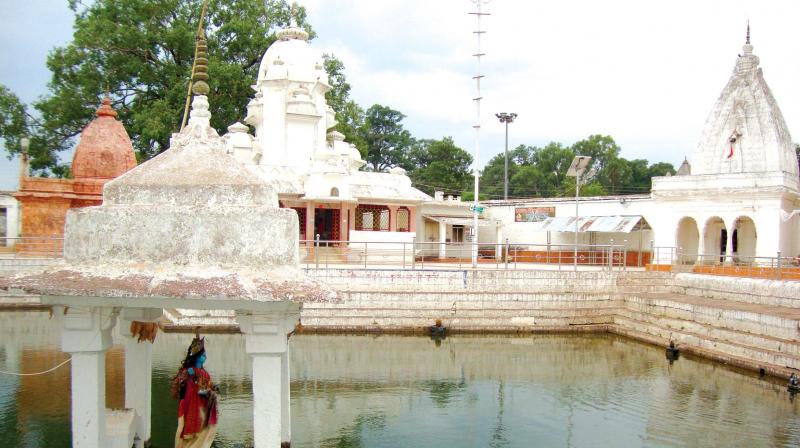Holy kunds and temples of Amarkantak
Loose yourself in this mystical paradise that has the best of nature and spirituality.

It’s amazing how nature is the most silent healer that could wrap us in awe and double up as a spiritual abode for damaged souls. Sometimes visiting a naturally benevolent destination works far better than searching for peace at a holy shrine, which we discovered in the blissful lush vistas of Amarkantak. A small hilly town of Madhya Pradesh, blessed with a unique location and surrounded by Vindhya and Satpura mountain range with Maikal Hills as fulcrum, it is home to some of the rarest variety of flora with medicinal properties.
The small but significant town of Amarkantak is one of the most famous pilgrims in the central India, and is known for its interesting mythical history which has a lot to do with the fact that this region is origin point of two renowned rivers – the Narmada and the Sone along with a small tributary, the Johilla River. Due to the distinctive mineral properties of the hills, the river origination spots and therapeutic jungle surrounding the town, this town attracts a lot of spiritual tourists and nature lovers from India.
Temple run
Like any other Indian holy town, the history of this place revolves around a story from the scriptures – it is popularly known as Teerthraj (the king of pilgrimages) due to the origin of holy river Narmada. The most-visited Narmada temple is dedicated to the river and is known as the divine spot which has a holy kund (pond) where many tourists come to take a dip and offer their prayers. A little away from the temple are the ancient temples of Kalachuri period, situated in the south side of the Narmada kund. These temples were built by Kalachuri Maharaja Karnadeva between 1041–1073 AD and still stand tall as ASI protected monuments.
One can also visit the small shrines called the Kabir Kothi, where saint and poet Kabir spent years meditating. A little away from the main town are the newly constructed Shri Yantra temples, where one cannot possibly miss the huge faces of yoginis built in all four directions at the entrance. These temples are architectural wonder dedicated to Lord Vishnu, and are situated in the middle of a green corridor. Apart from these main temples, there are several small shines across the town dedicated to different gods and goddess. An important thing to remember here is that consuming alcohol or non-vegetarian food in this town is almost banned, so try out the dhaba food and cafes where you can enjoy the traditional Indian food and the local specialty poha jalebi.
Wild adventures
It is situated between the Achanakmar Wildlife Sanctuary, which is part of the protected biosphere reserve and closely connected with the forests of Kanha National Park. The famous twin falls – Kapil-dhara and Dudh-dhara – are one of the most popular tourist spots surrounded by dense forest and located within six to seven kilometers radius of the town. On the way to these falls, one can spot monkeys, bears, cheetals, elephants, birds and even get a glimpse of the famous Bengal tigers.
From the top of the hill, one can reach the Sonmuda sunrise point, which is known for the bird’s eye view of the entire forest and mountains wrapped around it. While going uphill by the road, you’ll come across multiple signboards warning about the freely-roaming animals in the vicinity, and it is highly advised not to disturb them in the natural habitat or there could be heavy fine from the forest department. Also, a lot of monkeys on your way await, so be careful not to carry too many food items or it will be towed away as unexpected “monkey tax”.
How to reach Amarkantak
The quaint hill town is located at an elevation of 1,048 metres above sea level and is connected via roads from Rewa, Shahdol, Anuppur, Jabalpur, and Katni, so a bus or a taxi ride from these nearby cities is the easiest way to reach Amarkantak. The nearest railway stations are Anuppur and Pendra Road, whereas the nearest airport city is Jabalpur (around 240 km) which has daily flight service.

